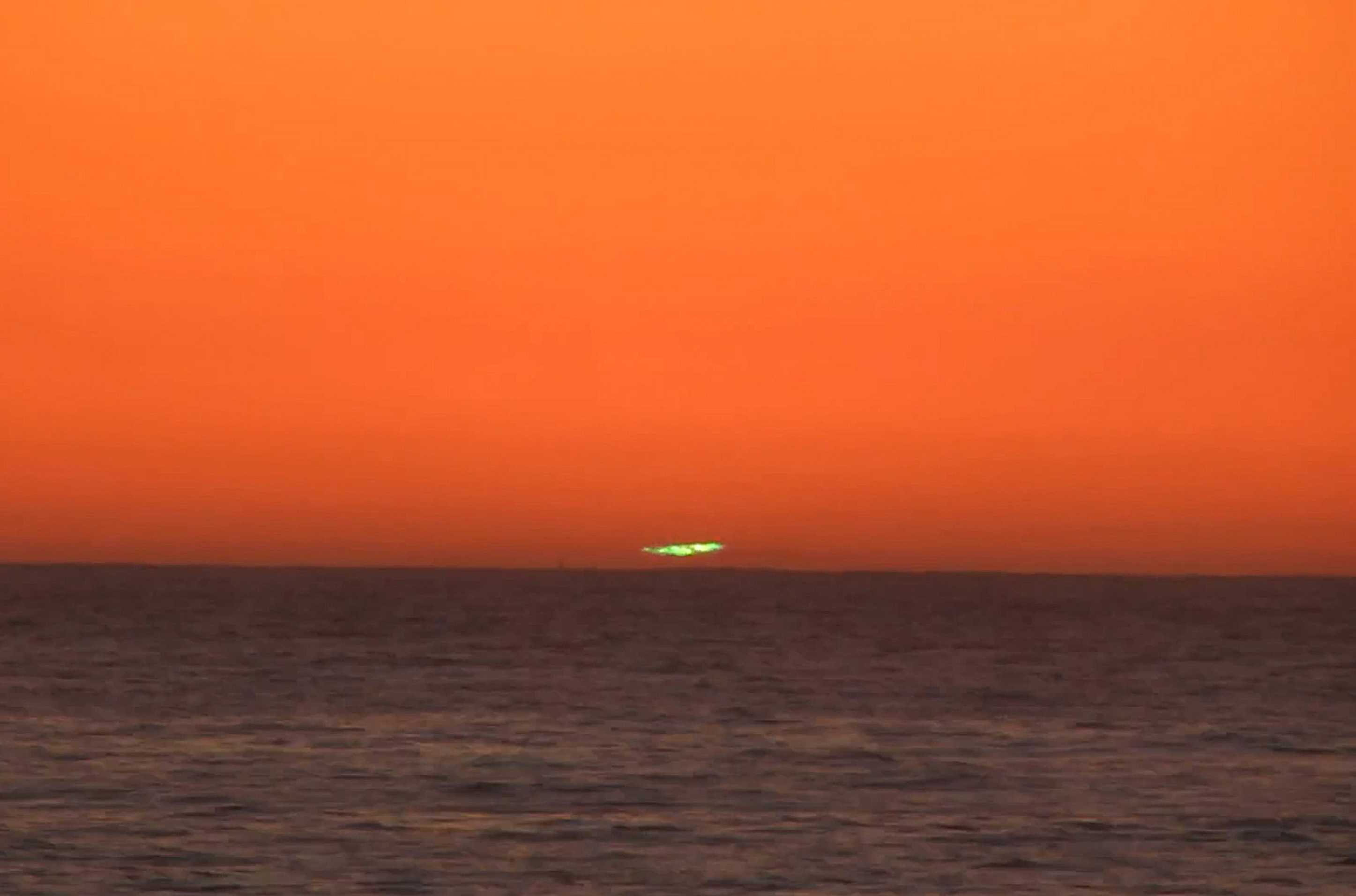Green Flash
(Section 3.2.3.10)Definition: Green flash: A predominantly green coloration of short duration, often in the form of a flash, seen at the extreme upper edge of the Sun, Moon or sometimes even a planet when disappearing below or appearing above the horizon.
Flashes up to an altitude of several degrees have sometimes been observed. Although the colour of the phenomenon is predominantly green, blue and violet may rarely be visible when the air is very transparent. The phenomenon can only be seen if the horizon is clearly visible. It is more frequently observed over sea than over land.
There are two main types of green flashes, each lasting for approximately 1−2 s.
(a) Inferior mirage flash: This may occur as the last glimpse of the setting Sun, or as the first glimpse of the rising Sun. It may occur when the surface layer of air is markedly warmer than the overlying air, and it is best seen from close to sea level.
(b) Mock mirage flash: This occurs as an area detached from the upper limb of the Sun shortly before the Sun has actually set, or shortly after it has risen. It occurs where warmer air is above cold surface air and the observer is viewing from above the temperature inversion.
Other, very rare types of green flashes are known. These include the subduct flash, where the upper portion of an hourglass-shaped Sun turns green for up to 15 s, and the green ray where a beam of light extends upwards from a green flash, or is seen immediately after sunset. On very rare occasions, a green flash may be observed when the Sun disappears behind mountains, the upper edge of a cloud bank near the horizon or coastal fog.




